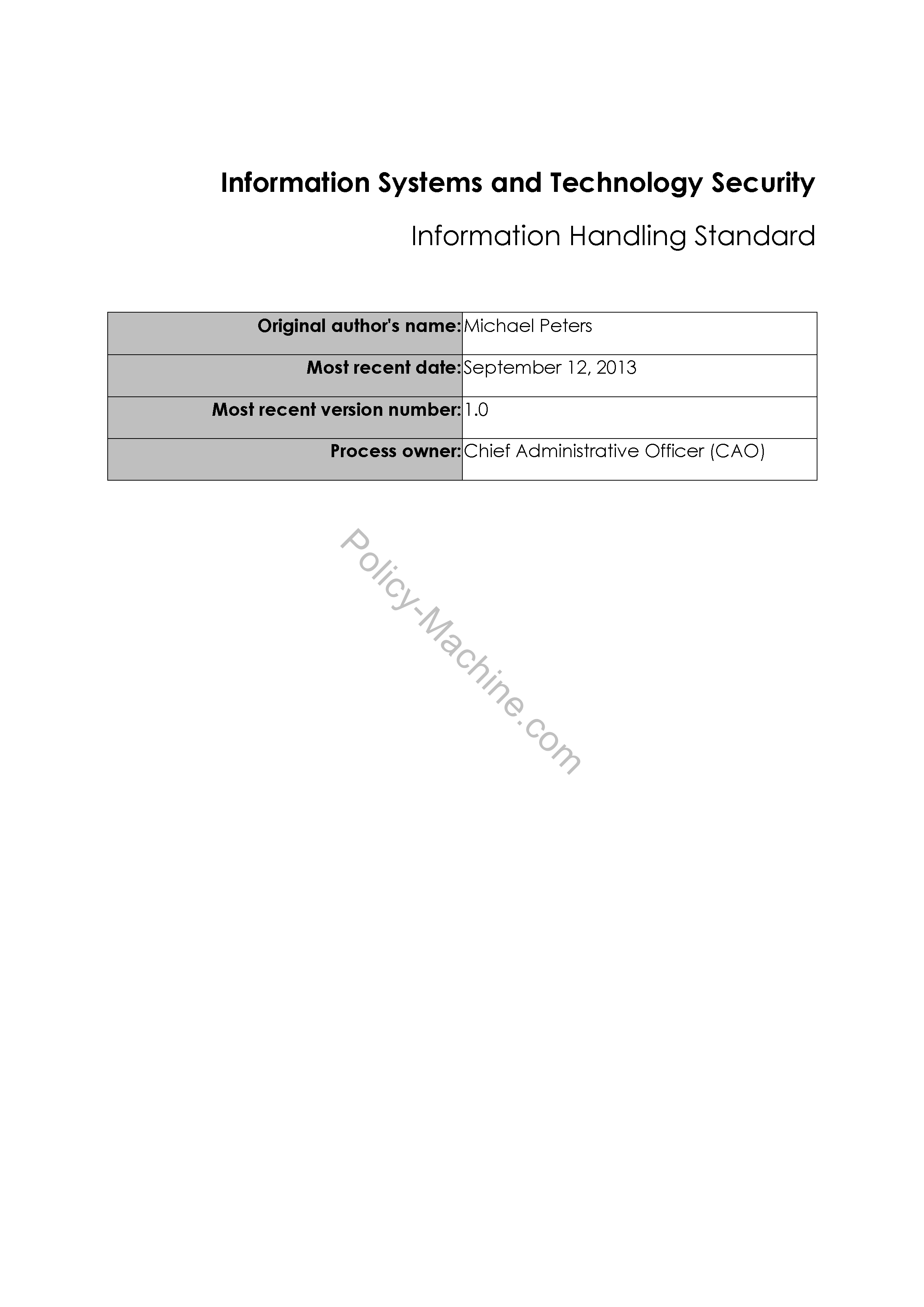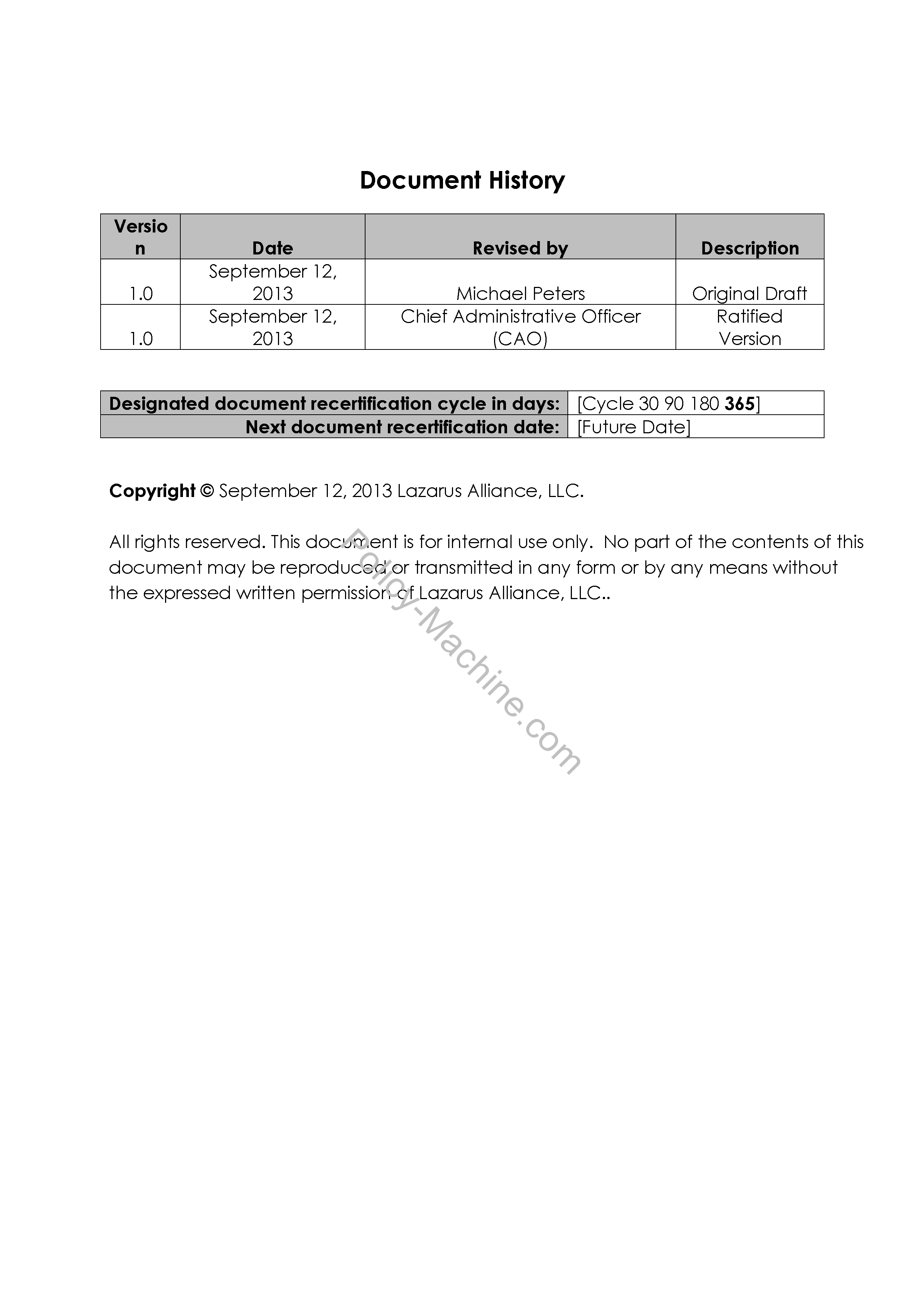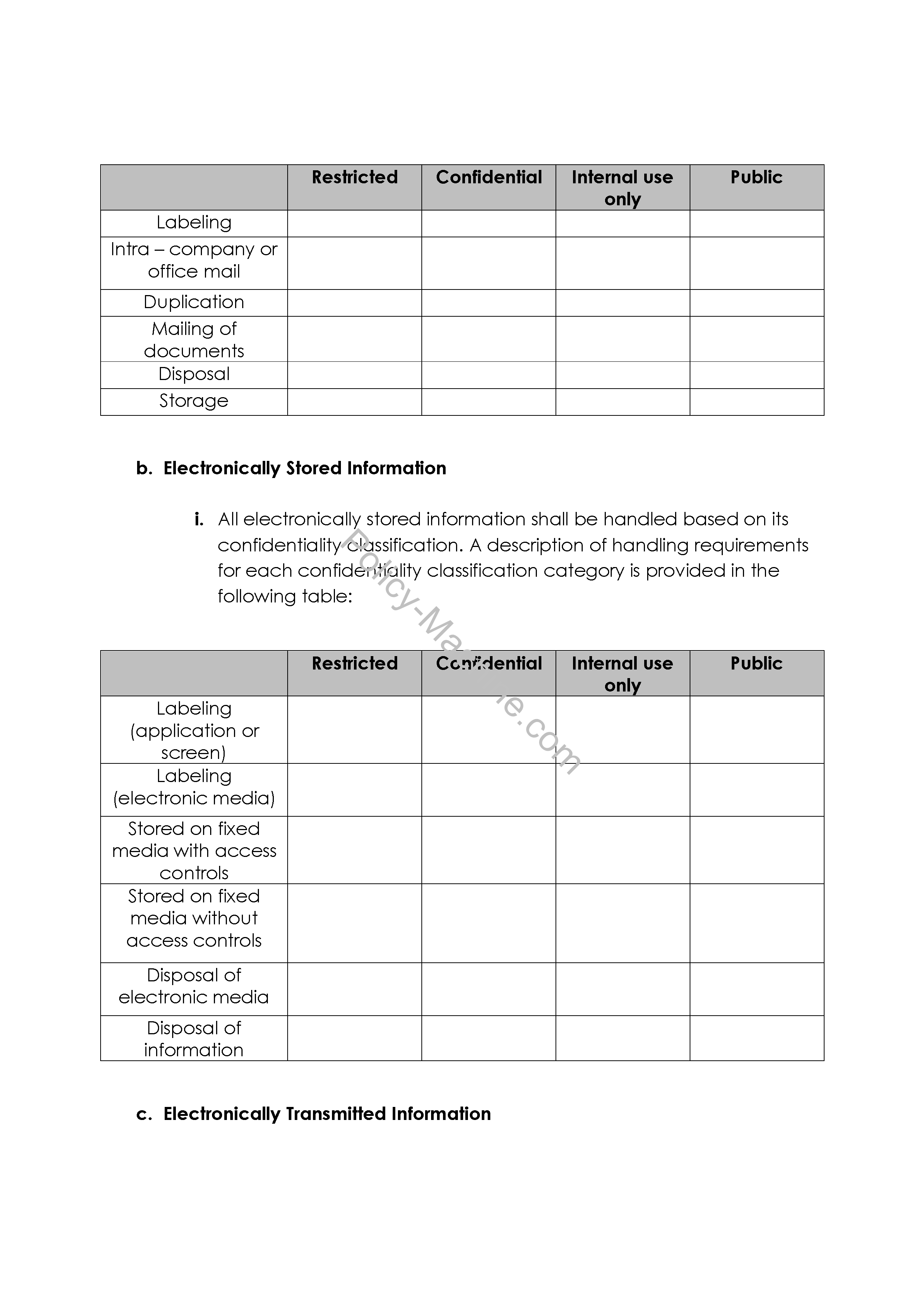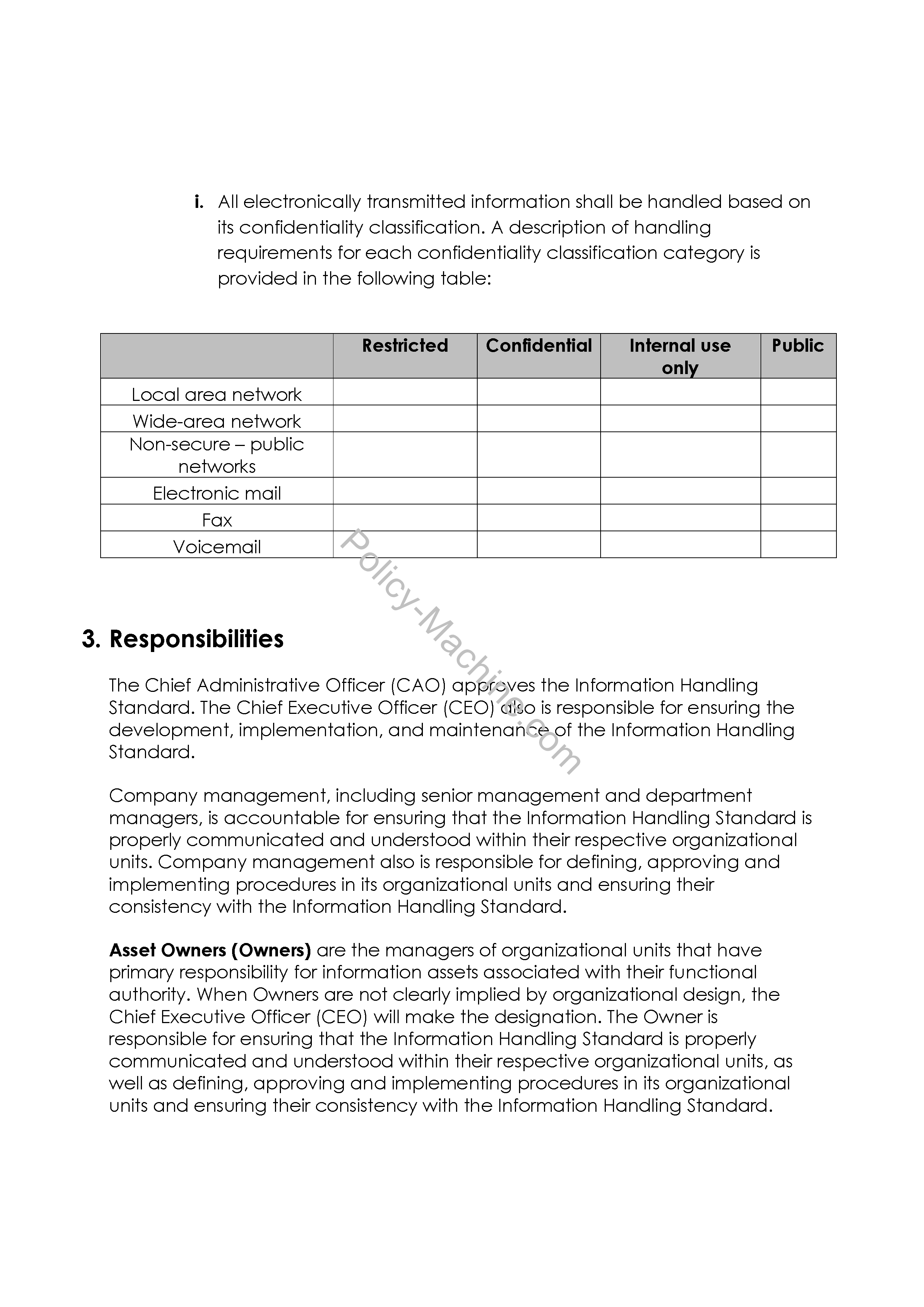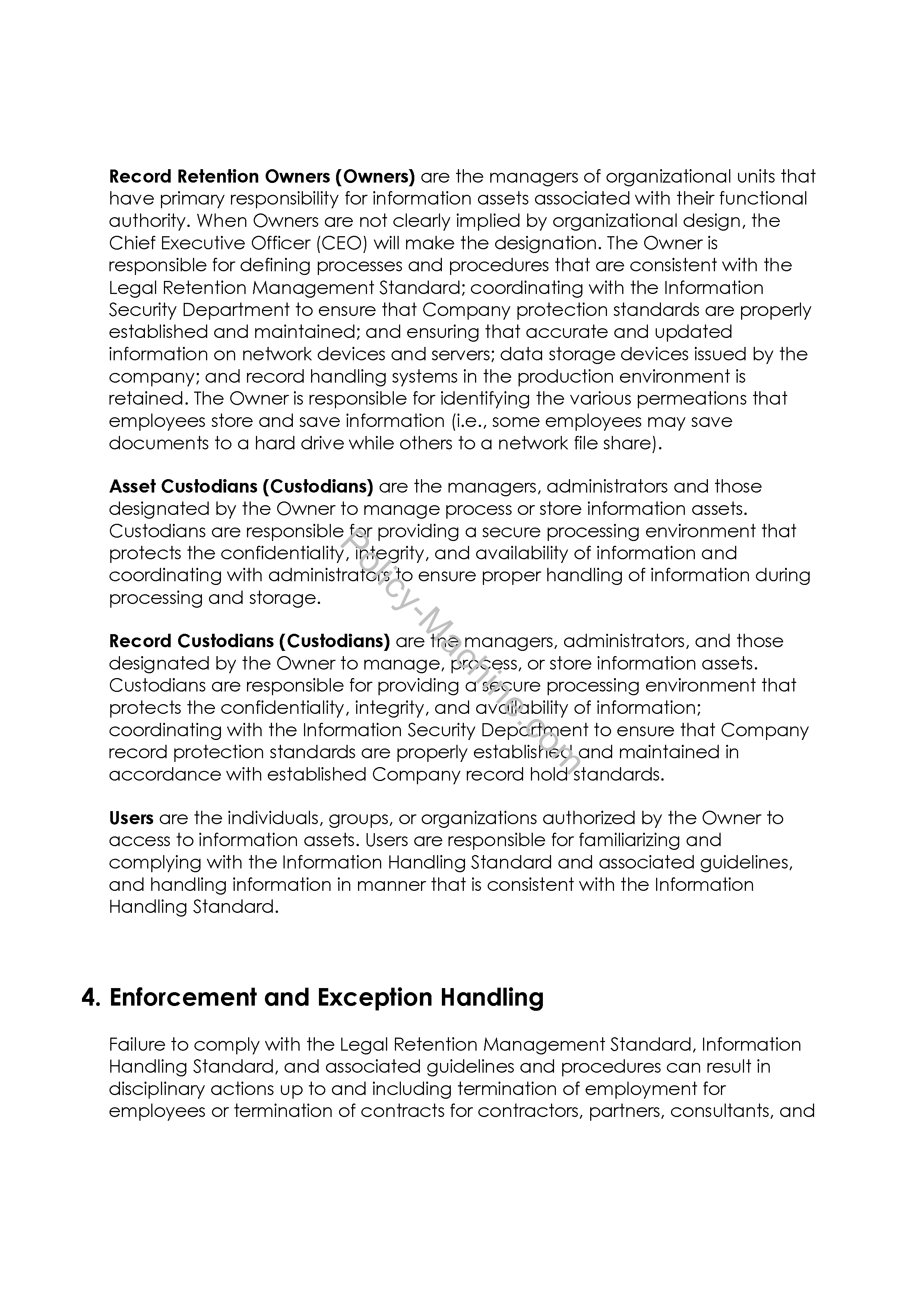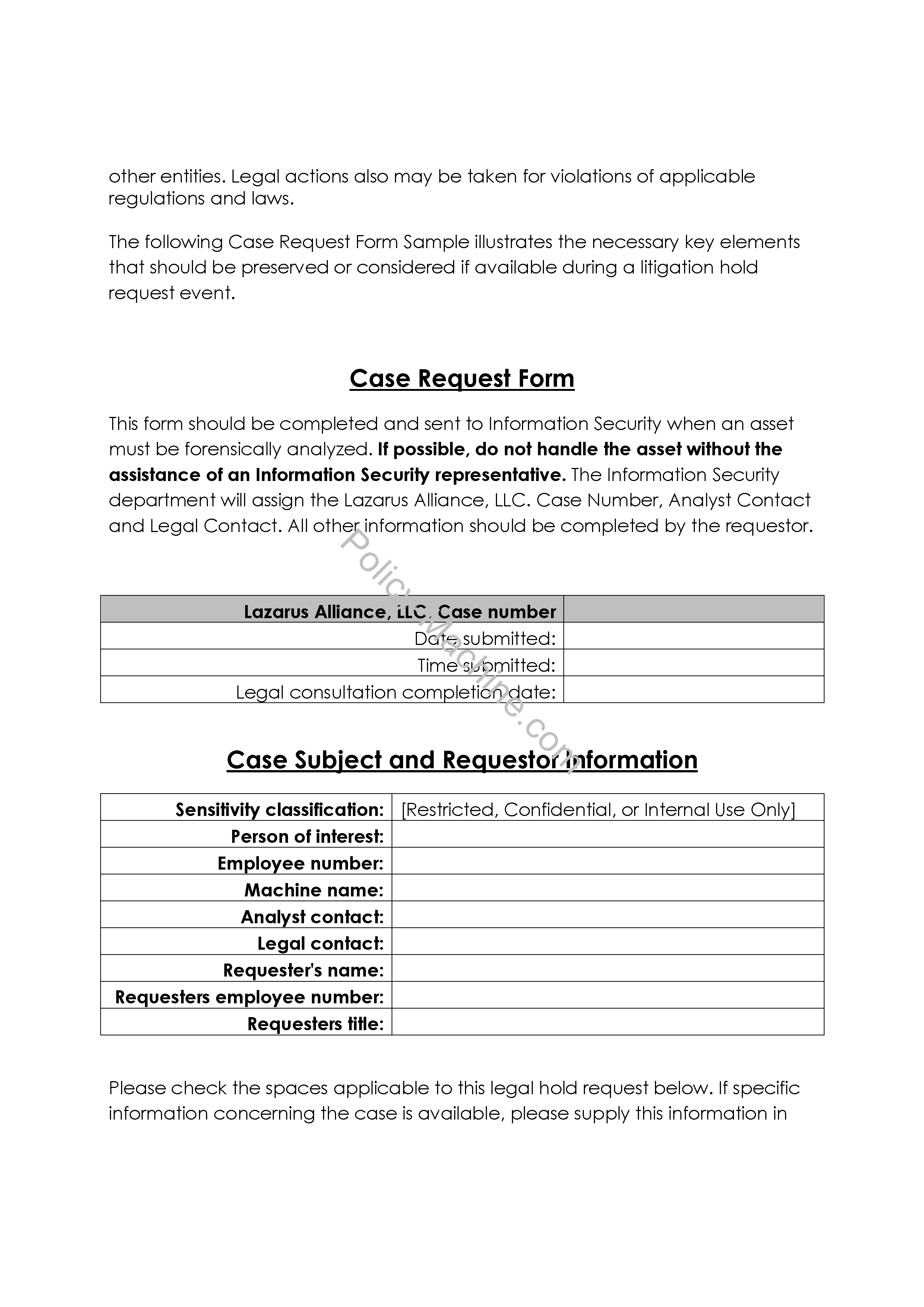Sample Information Handling Standard:: Difference between revisions
No edit summary |
No edit summary |
||
| Line 1: | Line 1: | ||
== | ==Sample Information Handling Standard== | ||
This Information Handling Standard builds on the objectives established in the [[Sample_Asset_Protection_Policy:|'''Asset Protection Standard''']], and provides specific instructions and requirements for handling information assets. These instructions address handling requirements for printed, electronically stored, and electronically transmitted information. | |||
==Objectives== | |||
This Information Handling Standard builds on the objectives established in the [[ | |||
== | |||
:'''A. Printed Information'''<br> | :'''A. Printed Information'''<br> | ||
<br> | <br> | ||
| Line 62: | Line 48: | ||
</table> | </table> | ||
</blockquote> | </blockquote> | ||
<br> | |||
==Document Examples== | |||
Use these samples as a guide for your policy development. Fully customizable versions are available from [http://policy-machine.com The Policy Machine].<br> | |||
<br> | <br> | ||
<gallery> | |||
< | Image:Information Handling Standard.png|Information Handling Standard page one of ten. | ||
Image:Information Handling Standard(1).png|Information Handling Standard page two of ten. | |||
Image:Information Handling Standard(2).png|Information Handling Standard page three of ten. | |||
Image:Information Handling Standard(3).png|Information Handling Standard page four of ten. | |||
Image:Information Handling Standard(4).png|Information Handling Standard page five of ten. | |||
Image:Information Handling Standard(5).png|Information Handling Standard page six of ten. | |||
Image:Information Handling Standard(6).png|Information Handling Standard page seven of ten. | |||
Image:Information Handling Standard(7).png|Information Handling Standard page eight of ten. | |||
Image:Information Handling Standard(8).png|Information Handling Standard page eight of ten. | |||
Image:Information Handling Standard(9).png|Information Handling Standard page ten of ten. | |||
</gallery> | |||
[[file:Information Handling Standard.png]] | |||
[[file:Information Handling Standard(1).png]] | |||
[[file:Information Handling Standard(2).png]] | |||
< | [[file:Information Handling Standard(3).png]] | ||
[[file:Information Handling Standard(4).png]] | |||
[[file:Information Handling Standard(5).png]] | |||
[[file:Information Handling Standard(6).png]] | |||
[[file:Information Handling Standard(7).png]] | |||
[[file:Information Handling Standard(8).png]] | |||
[[file:Information Handling Standard(9).png]] | |||
: | |||
: | |||
Revision as of 17:56, 23 January 2014
Sample Information Handling Standard
This Information Handling Standard builds on the objectives established in the Asset Protection Standard, and provides specific instructions and requirements for handling information assets. These instructions address handling requirements for printed, electronically stored, and electronically transmitted information.
Objectives
- A. Printed Information
- 1. All printed information shall be handled based on its confidentiality classification. A description of handling requirements for each confidentiality classification category is provided in the following table:
Restricted Confidential Internal Use Only Public Labeling Intra-Company or Office Mail Duplication Mailing of Documents Disposal Storage
- B. Electronically Stored Information
- 1. All electronically stored information shall be handled based on its confidentiality classification. A description of handling requirements for each confidentiality classification category is provided in the following table:
- 1. All electronically stored information shall be handled based on its confidentiality classification. A description of handling requirements for each confidentiality classification category is provided in the following table:
Restricted Confidential Internal Use Only Public Labeling (application or screen) Labeling (electronic media) Stored on fixed media with access controls Stored on fixed media without access controls Storage on removable media Disposal of electronic media Disposal of information
- C. Electronically Transmitted Information
- 1. All electronically transmitted information shall be handled based on its confidentiality classification. A description of handling requirements for each confidentiality classification category is provided in the following table:
- 1. All electronically transmitted information shall be handled based on its confidentiality classification. A description of handling requirements for each confidentiality classification category is provided in the following table:
Restricted Confidential Internal Use Only Public Local Area Network Wide Area Network Non-Secure/Public Networks Electronic Mail Fax Voice-Mail
Document Examples
Use these samples as a guide for your policy development. Fully customizable versions are available from The Policy Machine.
-
Information Handling Standard page one of ten.
-
Information Handling Standard page two of ten.
-
Information Handling Standard page three of ten.
-
Information Handling Standard page four of ten.
-
Information Handling Standard page five of ten.
-
Information Handling Standard page six of ten.
-
Information Handling Standard page seven of ten.
-
Information Handling Standard page eight of ten.
-
Information Handling Standard page eight of ten.
-
Information Handling Standard page ten of ten.










